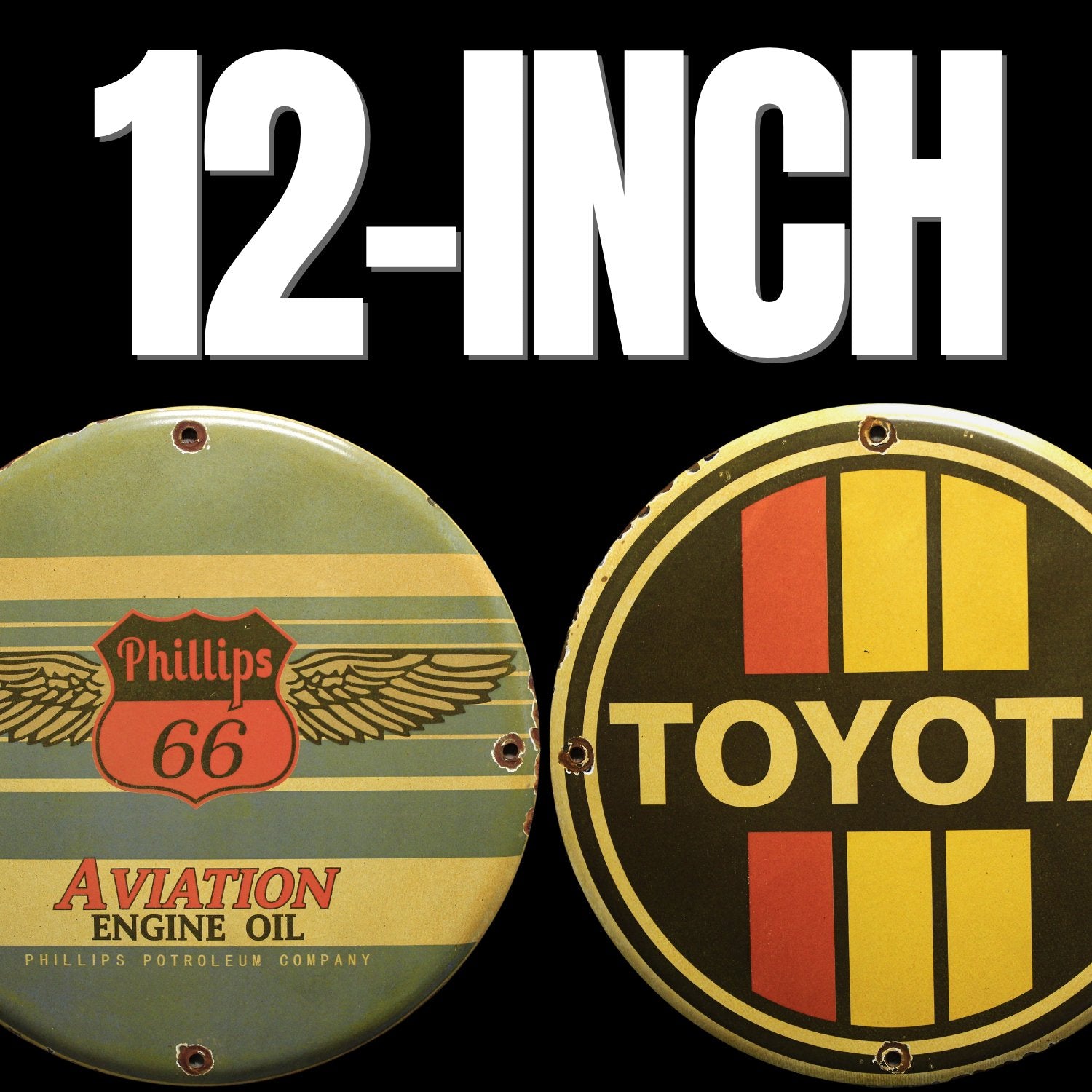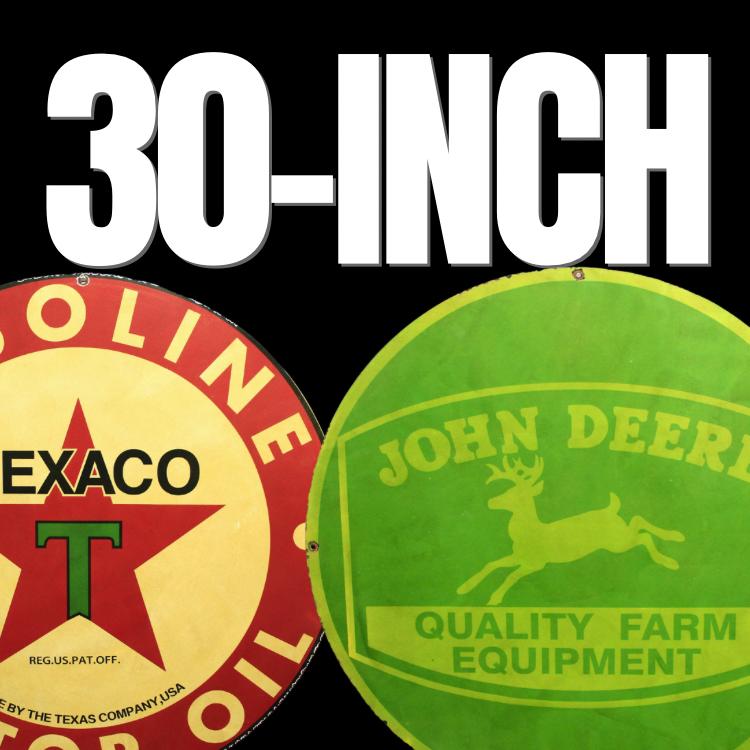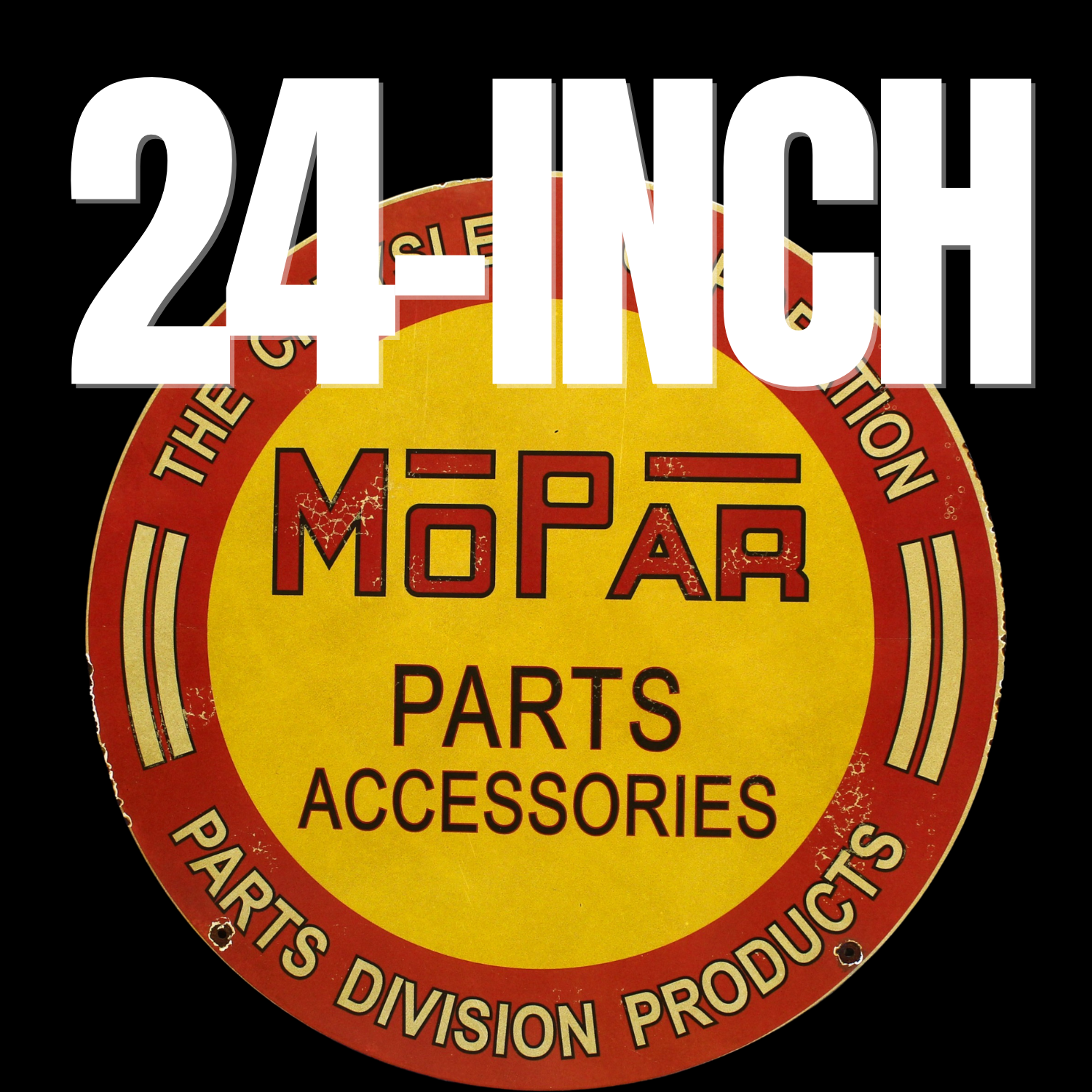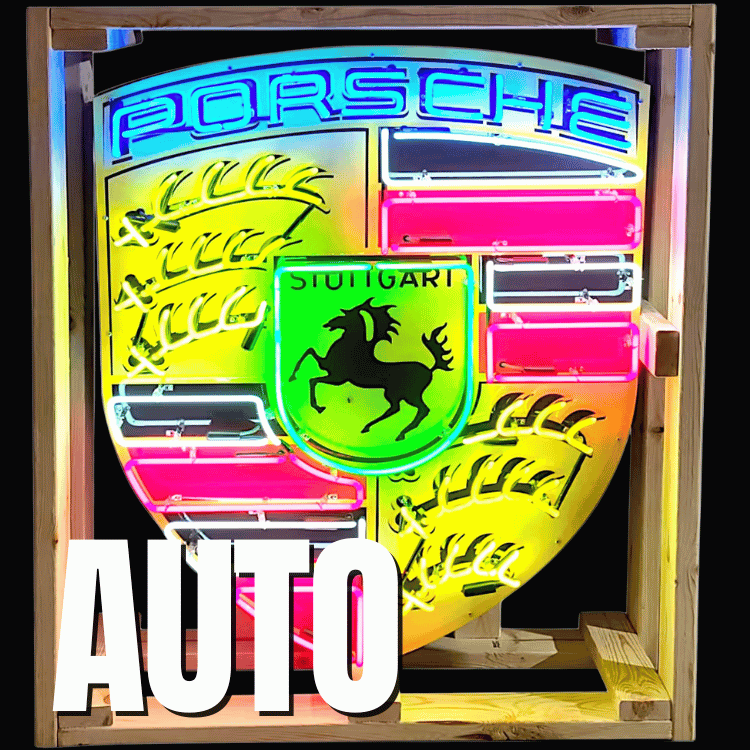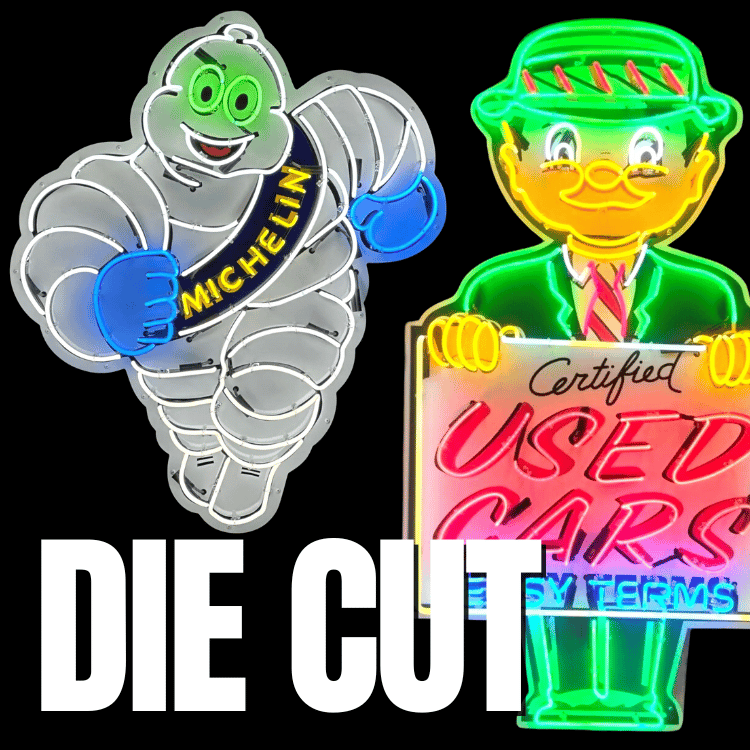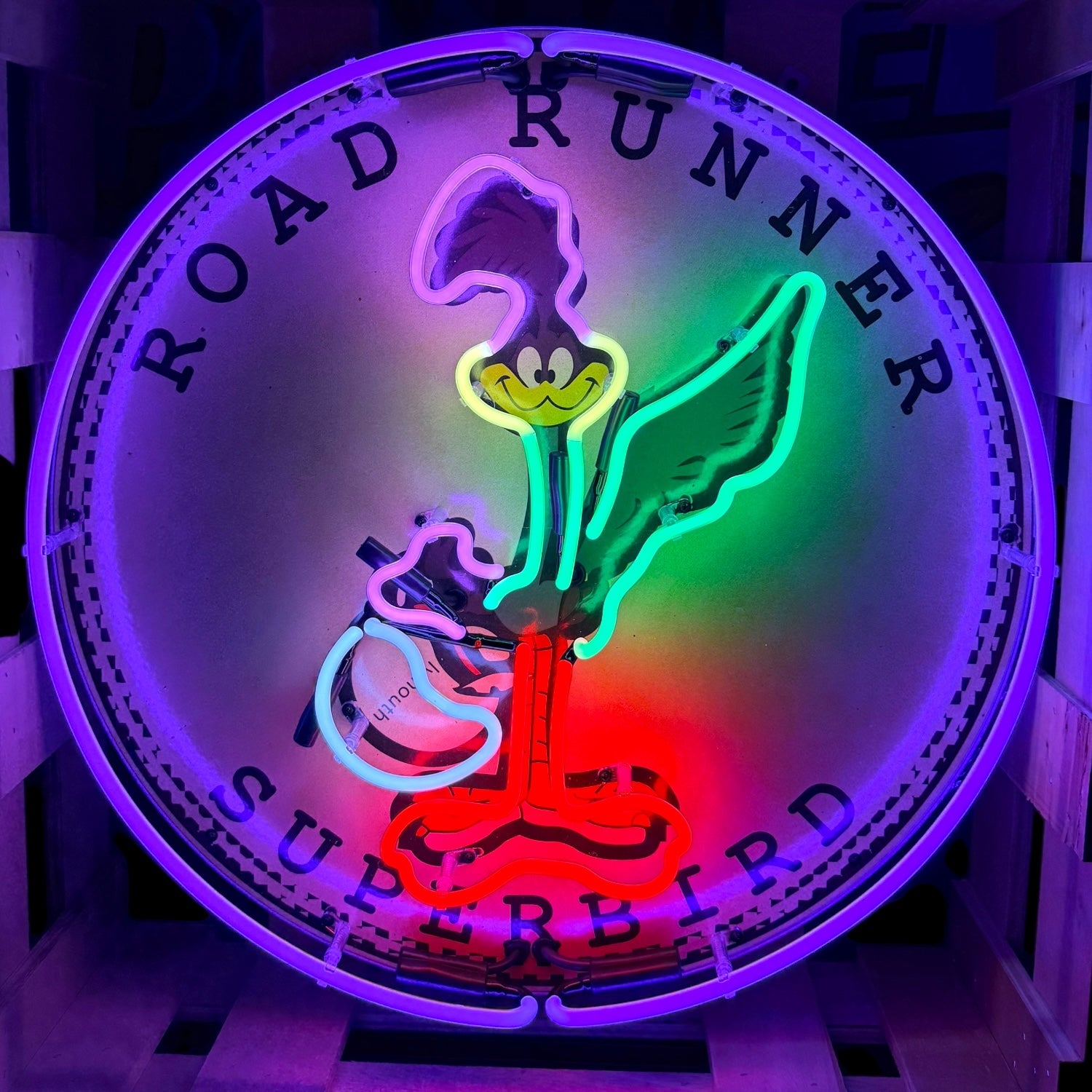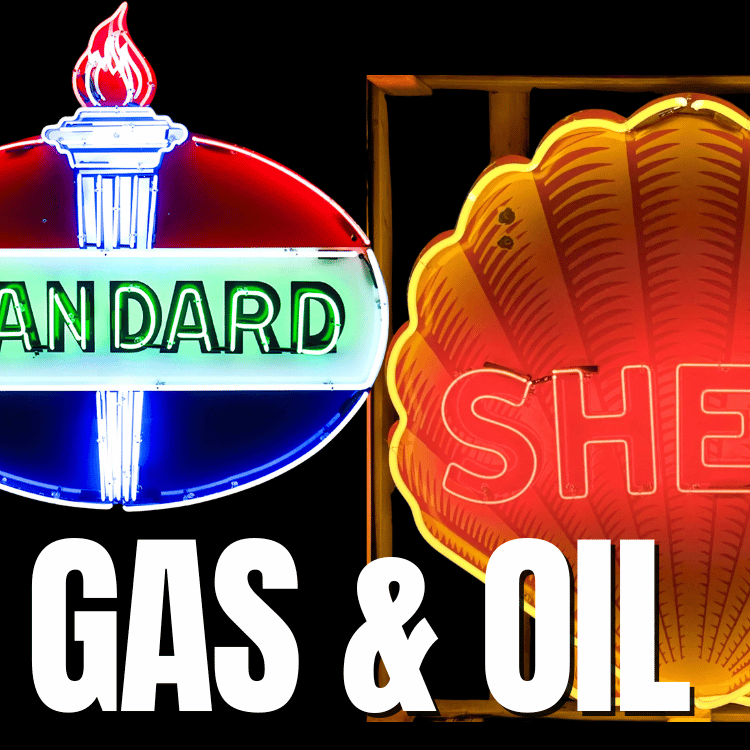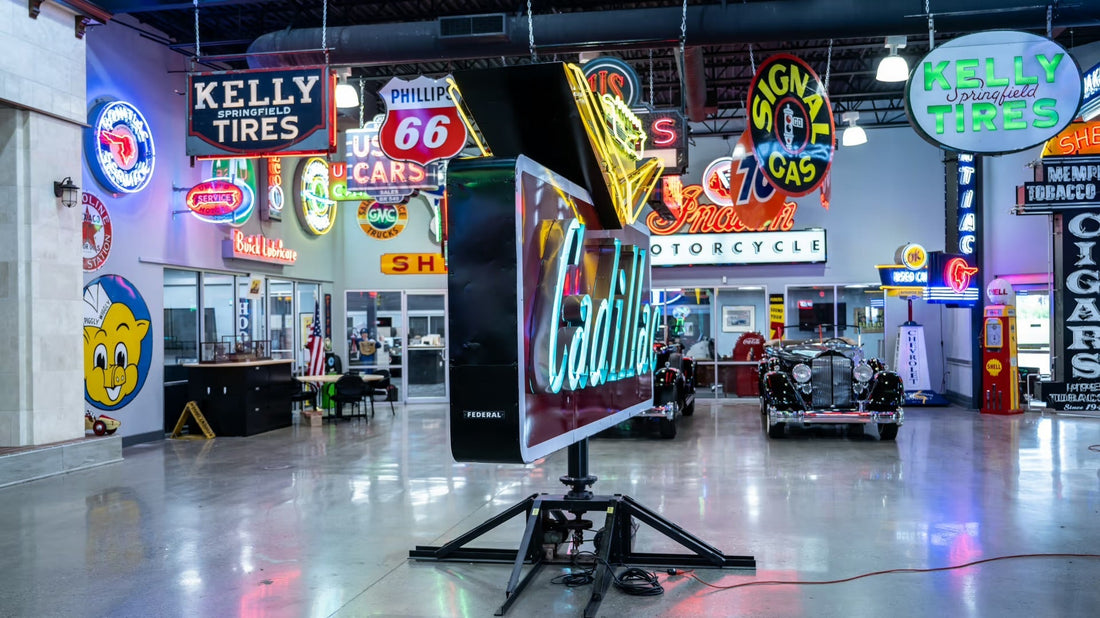
Porcelain vs. Tin vs. Aluminum Signs: What’s the Difference?
Porcelain vs. Tin vs. Aluminum Signs: What’s the Difference?
If you’ve spent any time collecting vintage signs—or even just browsing online—you’ve probably noticed something: not all signs are created equal.
Some are paper-thin and glossy, others feel solid and weighty, and then there are the cheap fakes slapped together with stickers on metal. The differences aren’t just cosmetic. Materials matter. Craftsmanship matters. And when you know what to look for, it becomes easy to separate the real deal from the knockoffs.
Let’s break it down: porcelain vs. tin vs. aluminum signs.
Porcelain Enamel Signs: Built to Last Generations
Real porcelain enamel signs are in a class of their own. They’re made by firing powdered glass onto heavy steel at over 1,400°F. That process fuses the enamel to the metal, creating a glossy, glass-like surface that’s incredibly durable. The colors don’t fade, the finish doesn’t peel, and they hold up in any weather—indoors or out.
You can feel the difference. Porcelain signs are thick, weighty, and cold to the touch. The finish has depth. There’s a richness you don’t get from anything else.
These were the signs gas stations and soda companies used back in the day because they were built to last. And the ones still around today are proof that they did.
At Porcelain Advertising, we don’t imitate that process—we use it. Every sign we make is kiln-fired porcelain enamel on 1/4” heavy gauge steel, just like the originals.
Tin Signs: Lightweight and Mass-Produced
Tin signs were a cheaper alternative used primarily in the mid-20th century for short-term promotions. They were stamped out quickly and painted or screen-printed—not fired—so the finish doesn’t hold up over time.
They’re lightweight, often flimsy, and prone to rust and fading. You’ll see them in antique shops or flea markets, and while they have their place in history, they’re not in the same league as porcelain when it comes to longevity or quality.
Aluminum Signs: The Modern Knockoff
Most of the so-called “reproduction signs” you see online today are made from thin aluminum sheets with digitally printed graphics or vinyl stickers applied to the surface. They’re cheap to produce, and frankly, they look and feel that way.
No gloss, no depth, no durability—and definitely not what collectors are looking for. They might look decent in a photo, but in person, there’s no comparison.
If you’ve ever held a real porcelain sign, you know exactly what I mean.
So, What’s Right for You?
If you’re decorating a garage or man cave and just want something quick and inexpensive, a tin or aluminum sign might get the job done. But if you care about craftsmanship, nostalgia, and owning something that feels like the real thing, there’s no substitute for porcelain enamel.
At Porcelain Advertising, we build every sign the right way:
• Kiln-fired porcelain enamel
• 1/4” heavy gauge steel
• Hand-punched mounting holes
• Made in the USA
Just like the originals—because it is.
Final Thoughts
There’s a reason original porcelain signs still bring thousands of dollars at auction: they were built to last. Whether you’re a collector or just want something that feels authentic, now you know what to look for—and what to avoid.
And if you’re tired of choosing between overpriced beat-up originals or flimsy fakes, you’re not alone. That’s why we started Porcelain Advertising in the first place.
Want to see the difference for yourself? Shop our collection and feel what real quality looks like.



